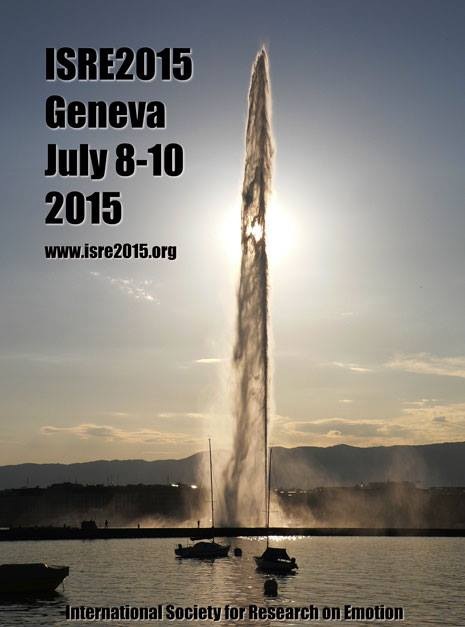
 Andrea Scarantino, Department of Philosophy and Neuroscience Institute, Georgia State University
Andrea Scarantino, Department of Philosophy and Neuroscience Institute, Georgia State University
When asked to provide an example of what an emotion is, the knee-jerk reaction of a great many emotion theorists may well be to mention fear of a bear in the woods. After all, this was one of James’ archetypal case studies, and it brings into stark relief one of the emotions’ central functions, namely quickly and automatically coordinating resources so as to cope with a meaningful, and in this case aversive, stimulus situation.
The trouble with fear-of-a-bear-in-the-woods examples is that they separate the emoter from his or her social environment, hiding from view both the communicative power of emotions within social relationships, and how cultural differences can shape the elicitation and unfolding of emotions. To understand what we may broadly describe as the social dimension of emotions, we must focus on other exemplars of emotions, such as anger in a marital confrontation or embarrassment while clumsily delivering a song to an audience.
These new exemplars allow us to shift theoretical focus from the intrapsychic to the interpersonal, from the unbidden to the strategic, from the short-lived to the long-lived, from the context-independent to the context-dependent, from the static to the dynamic, unveiling complexities of our emotional lives that go well beyond what an episode of fear of a bear in the woods can reveal.
This issue of Emotion Researcher surveys some of the progress recently made in understanding the social dimension of emotions in a variety of disciplines. We begin with Vasu Reddy’s developmental psychology perspective, and explore the impact of social interactions and cultural differences on the emotional development of infants. Her article emphasizes how early infants are drawn to engage with their social environment, and how quickly cultural differences in the interactive style of caregivers start shaping their emotional lives. Some of her most interesting case studies focus on the development of coy smiles and humor in infants.
Brian Parkinson investigates the psychological processes underlying how another person’s emotions can affect your own, distinguishing between an inferential, appraisal-mediated road (e.g. inferring that I am to blame from your anger and possibly reacting to this appraisal with guilt) and a more straightforward road in which the very physical characteristics of another person’s emotions have a direct causal impact (e.g. flinching and pulling away as a direct effect of the volume and pitch of someone’s angry shouts). Parkinson emphasizes that the non-inferential road allows emotions to exert interpersonal influence very early in development, and that understanding both inferential and more direct paths of influence demands understanding the complex workings of a process of reciprocal and dynamic causation.
Kathryn Lively offers us some sociological insights on the social dimension of emotions, focusing her attention on the role of emotions in the workplace. One of her key points is that our professional roles in the workplace come with societal expectations about which emotions we should or should not express. These expectations depend in part on the gender and race of the role occupant, and they include expectations about the degree to which different workers are supposed to regulate their emotions (e.g. higher ranking members of organizations are expected to manage their emotions less than lower ranking ones). Lively also emphasizes the profound social impact that emotional deviance, instantiated when individuals stop manifesting the characteristic emotions associated with their social roles, can have both in interpersonal relationships and in society at large, using the emancipation of women and the Arab Spring among her examples.
Achim Stephan and Sven Walter provide us with a roadmap for navigating the rugged terrain of situated approaches in the philosophy of emotions. Just as the situated cognition movement emphasized that we should not bracket off the environment beyond the individual in trying to make sense of cognitive states, Stephan and Walter emphasize that emotion theory will greatly benefit from understanding emotions in the context of reciprocal real-time interactions between emoters and their environments. This idea has been developed in a variety of ways, leading to accounts of emotions as embodied, embedded, extended and distributed. Their article provides an analysis of each of these contentious terms, exploring how the various notions of situatedness can lead to progress in emotion theory.
This issue’s interview is with Nico Frjida, one of the major figures of contemporary emotion theory. Nico’s wide-ranging interview begins with his haunting memories of being persecuted as a Jew during World War II, shifts to the rosier memories of falling in love for the first time at age 18, and it traces the intellectual origin and recent developments of his influential theory of emotions as states of action readiness. You will greatly enjoy Nico’s interview (and check out his mango soup recipe!).
The Young Researcher Spotlight is on Gerben A. Van Kleef, a psychologist from the University of Amsterdam. Gerben’s experimental work focuses on how emotions regulate social interactions. In the span of a few years, Gerben has collected an impressive amount of behavioral, physiological, eye-tracking, and self-report and peer-report data on the social consequences of anger, sadness, disappointment, guilt, regret, disgust, happiness, and pride in a variety of interactive settings, including deal-making, team performance, personal relationships, and sports.
ISRE’s President, Arvid Kappas, devotes his ISRE Matters column to introducing the research community to a topic dear to his heart, namely affective computing and robotics. Read Arvid’s column to learn about the challenges we currently face in building emotion-savvy robots, and to discover how emotion theorists and implementers of robotic affective systems can help one another.
and robotics. Read Arvid’s column to learn about the challenges we currently face in building emotion-savvy robots, and to discover how emotion theorists and implementers of robotic affective systems can help one another.
Finally, the dates and venue of ISRE2015 are now official: it will take place July 8-10, 2015 in Geneva. David Scherer will be program chair and local organizer together with members of the Swiss Center for Affective Sciences and a selected international and interdisciplinary program committee. This promises to be a terrific meeting, and I look very much forward to it. If you click on the picture to the right, you will be sent to the official conference webpage, which will be updated over time.
Keep your eyes open for the call for papers, which will come out this September, with a December 1 deadline for abstract submissions. As usual, be in touch with comments, ideas for future issues, information about forthcoming conferences, reports about especially promising young researchers, and whatever else strikes your fancy. To whet your appetite, let me also say that three exciting issues of Emotion Researcher are in the works: one on musical emotions, one on emotional intelligence, and one on facial expressions. Stay tuned!
PS For the PDFs of this issue, click here
Previous Editor’s Columns




